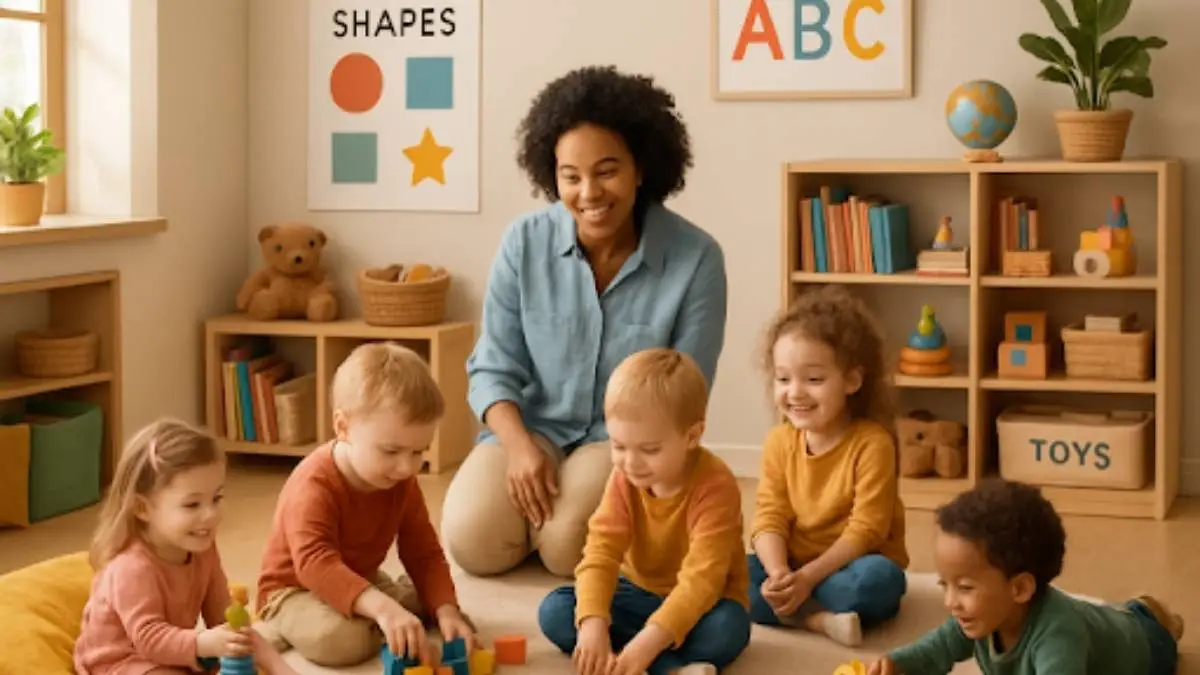EDUCATION
Creating Meaningful Early Childhood Learning Environments: Practical Strategies for Families and Educators

Why Early Learning Environments Matter
The earliest years of a child’s life lay the groundwork for lifelong learning, health, and well-being. Research shows that access to high-quality early learning environments fosters better literacy, enhanced emotional intelligence, and greater social adaptability. These impacts can carry through adolescence and beyond, making it crucial for educators and families to focus on the quality of their learning settings. Families have valuable resources to support robust early development in communities where high-quality preschool programs Winnetka, CA are available.
An intentional early learning environment does more than keep children safe—it invites curiosity, experimentation, and joy. Whether found at home, in child care, or organized preschool programs, these spaces are carefully curated to encourage exploration while offering comfort and predictability. Programs that embrace these principles demonstrate that a thoughtfully designed space can significantly influence children’s attention spans, social skills, and emotional resilience.
Elements of Effective Learning Spaces
A vibrant learning environment combines safety, accessibility, and stimulation. Natural light, comfortable seating, cozy reading corners, and well-labeled storage bins enable children to explore freely. Diverse materials such as building blocks, art supplies, and sensory objects offer endless possibilities for creative play. According to Edutopia, sensory-friendly places reduce stress and support focus, while minimalist organization helps children find independence in their environment.
- Encourage personalization of spaces to support a sense of belonging.
- Rotate toys and books to introduce novelty and stimulate fresh interests.
- Ensure pathways are clear, providing children space to move safely and confidently.
Inviting textures, calm lighting, and a combination of open and private zones all contribute to comfort and motivation. These details, though small, play a powerful role in how children approach learning moments each day.
The Role of Routine and Structure
Predictability and routine form the backbone of successful early learning. Children who know what to expect feel safe and secure, ready to engage meaningfully in activities. Visual schedules, musical cues, and consistent timing help even the youngest children adapt to transitions and reduce stress. Many educators suggest starting each morning with a simple “day board” or ritual, setting the mood and offering structure to the day’s events—practices that support self-regulation and enthusiasm.
Responsive Care and Attachment
Positive, responsive relationships between children and caregivers build emotional security and trust. From infancy, children thrive when adults pay close attention to their cues, verbal and nonverbal, and respond with warmth and consistency. Narrating daily activities, celebrating children’s efforts, and offering calm, predictable responses foster a safe space for growth. Such practices, highlighted by resources from Zero to Three, allow children to build confidence and resilience for future challenges.
Encouraging Curiosity and Exploration
Providing opportunities for children to make choices and experiment leads to deeper engagement and creative thinking. Materials such as loose parts, natural objects, and open-ended toys nurture curiosity and independent thought. Asking open-ended questions (“What do you notice about this shape?” or “How could we solve this problem together?”) spurs analytical and critical thinking, rather than searching for a single right answer.
- Allow children ample time to explore ideas without interruption or pressure for results.
- Praise process and perseverance over outcomes or correctness.
- Design spaces where children can safely investigate are known as “yes spaces.”
Even simple tools like magnifying glasses or trays of natural items can prompt rich conversations, helping children build language and scientific skills in playful, meaningful ways.
Family Involvement in Early Learning
When families actively participate in their child’s early learning, confidence and academic achievement increase significantly. Activities like sharing family histories, reading favorite books together, or exploring new experiences—like a local museum visit—help bridge home and classroom learning. Many communities offer family play nights and workshops, which empower parents with playful techniques and fresh ideas to encourage learning at home.
Overcoming Common Challenges
Time, space, and budget constraints can make it difficult to create vibrant early learning environments. However, incremental improvements—such as swapping out books, rearranging a play corner, or introducing recycled materials can refresh a setting without significant financial investment. Partnering with local libraries or connecting with other families for toy swaps are also effective ways to diversify learning opportunities. Small efforts often yield big results and demonstrate that creativity can overcome the most common obstacles.
-

 BIOGRAPHY7 months ago
BIOGRAPHY7 months agoBehind the Scenes with Sandra Orlow: An Exclusive Interview
-

 HOME1 year ago
HOME1 year agoDiscovering Insights: A Deep Dive into the //vital-mag.net blog
-

 HOME1 year ago
HOME1 year agoSifangds in Action: Real-Life Applications and Success Stories
-

 BIOGRAPHY1 year ago
BIOGRAPHY1 year agoThe Woman Behind the Comedian: Meet Andrew Santino Wife




























